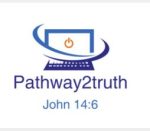As a seminary student, I am always looking for more information about the Bible. As I study to become a pastor for other people, it is extremely important that I learn all I can about the Bible and that I utilize all of the resources that are available to me. I had never heard of a Bible search until recently, but doing them has radically changed my ability to learn and process information about the Bible.
Continue reading →
2 Cor 5:10 – Can Anyone Actually Do “Good”?
Problem: Most people will read the title of this article and immediately think, “Of course a person can do good.” After all, Jesus said, “A good (agathos) man out of the good treasure of his heart brings forth good things” (Matthew 12:35). Paul instructed Christians to (simply) “do good to all” (Galatians 6:10). He later reminded the disciples in Corinth that “we must all appear before the judgment seat of Christ, that each one may receive the things done in the body, according to what he has done, whether good or evil” (2 Corinthians 5:10). And John wrote: “Beloved, do not imitate what is evil, but what is good. He who does good is of God, but he who does evil has not seen God” (3 John 11).
Continue reading →
Exploring Core Beliefs: A Deep Dive into Christianity
Christianity, with over two billion followers, represents a significant subset of the global religious community. As an Abrahamic monotheistic religion, it’s based on the life and teachings of Jesus Christ, whom Christians believe to be the Son of God and the Savior of humanity.
2 Cor 4:4 – Is the god of this world Satan or Jesus?
Problem: 2 Corinthians 4:4 says that the god of this world has blinded the minds of the unbelieving, so they will not see the light of the gospel. Who, then, is the “God of this world who blinds people”? Is it Jesus, or is it the devil? Now, this might sound like an easy question to answer. The god of this world is the devil. After all, it does not seem that Jesus would blind people from seeing the gospel. My opinion is that the god of this world is the devil. However, some maintain that it is Jesus. Both positions have their justification. Let me show you why.
Continue reading →
Uncovering Wisdom: 7 Techniques for Effective Bible Study
Bible study is not just a task, but an interactive experience that captivates the mind and the soul as it involves the careful and thoughtful reading of the Bible. The purpose of Bible study is the transformational understanding of the sacred scriptures, leading to a profounder connection with God and understanding His words. The Bible, written thousands of years ago, is a rich resource of moral and philosophical insights and historical context that holds relevant teachings for life today.
2 Cor 3:9-10 – Why does Paul quote Job 5:13 and Psalm 94:11?
Problem: Critics argue that Paul is mishandling the OT. Is this the case?
Continue reading →
5 Myths About Jesus’s Birthday, Debunked
Thanks to the likes of decorative holiday manger scenes, Hollywood movies, and elementary school reenactments, the nativity story is now so ingrained in many of our minds that we could probably recite a fairly accurate version of it—including everything from the Three Wise Men to there being “no room at the inn.”
But given that this story now has a 2,000-year-old history behind it (and that it has been passed and translated from one language to another over the centuries, moreover), it’s only natural that some of the precise details of the birth of Jesus have become a little hazy, if not lost to the mists of time altogether. The truth behind five of these nativity myths and legends is explored here.

